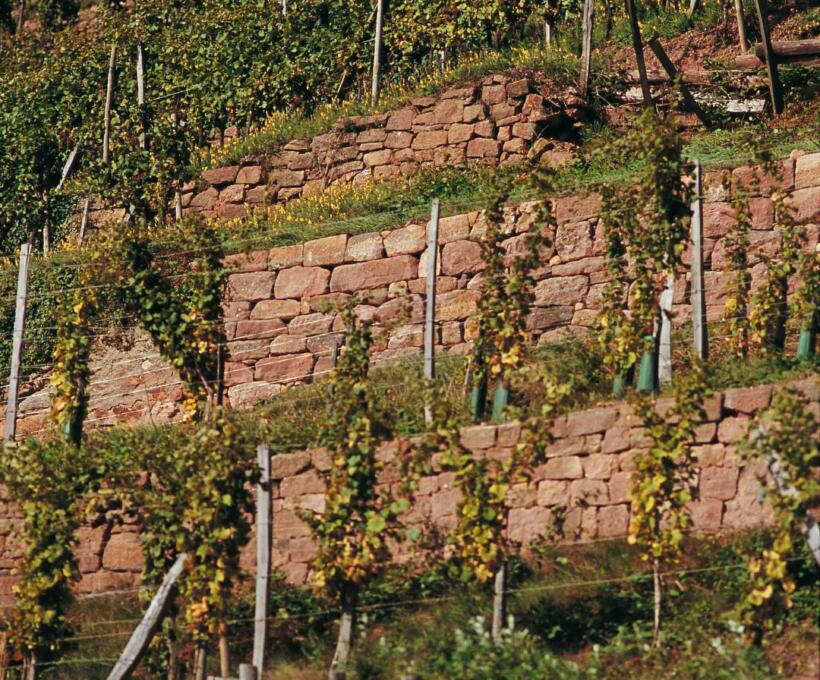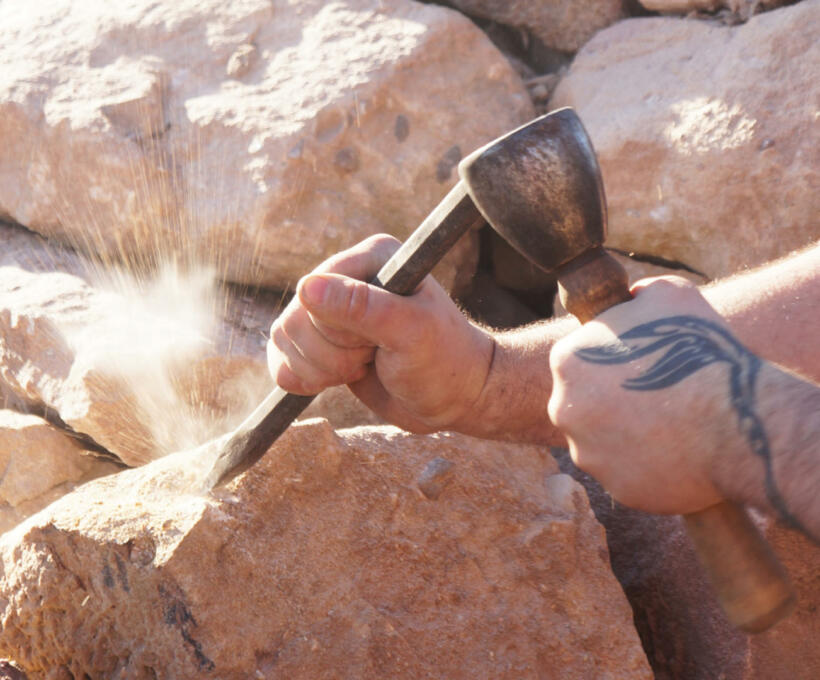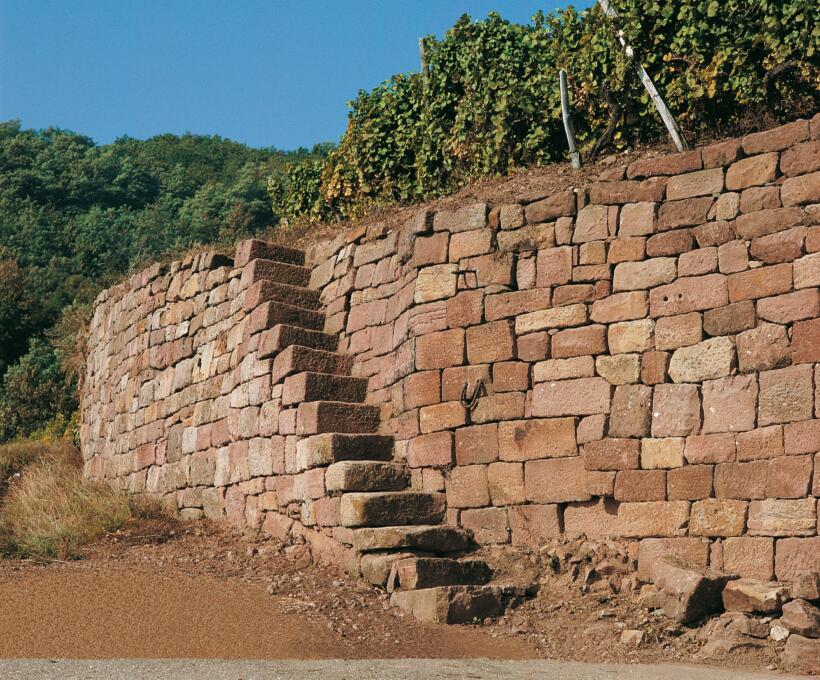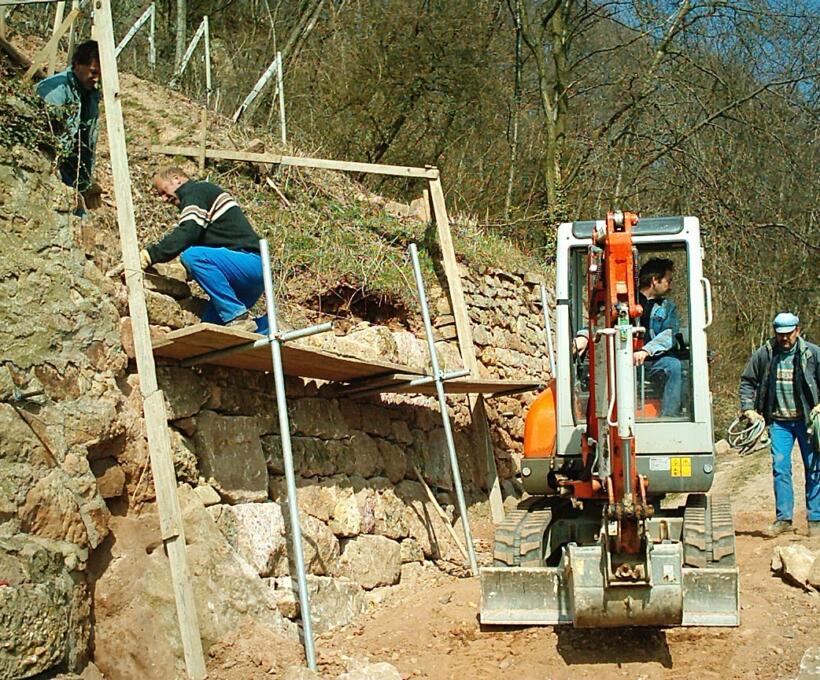The blocks of pink Vosges sandstone generally come from zones close to the soil surface. When the time of horse ploughing comes, we remove the stones to free the vineyard’s soil from the stones it contains.
This makes the work of our horses harder, because whenever a stone is found, the horse stops and the stone is placed aside. Of course, finding these stones lodged in the soil is not sufficient too meet our needs. This is why, as we had to build particularly large walls, we had the good luck to salvage stones from the old Mulhouse train station or the Ensisheim prison.
THE CONSTRUCTION OF THE WALL
Building a dry stone gravity wall (which will withstand the pressure exerted by the ground) along the mountainside imposes the rule of a foundation with equal 1/3 of the final height. The first issue is the appropriate determination of the batter (the slope required to counteract the lateral pressure of the ground).
SELECTION AND PREPARATION OF THE STONES
The mason selects by sight a block among the pile of stones, evaluating which will be the most appropriate for his work. Then, following the “opus incertum” (random work) rules, he will have to chisel, split and adjust this stone.
The initial approach consists in hitting the stone with a mallet to “hear” it. This allows him to hear the direction of the crystal cleavage within the stone so as to decide how to work on it.
With a simple hit of the hammer, the stone breaks right along the cleavage and splits to produce the rough shape of smaller blocks (rubble stones*). At the foot of the wall, it is a case of treating each element just like a grand couturier: cutting each ashlar to its right dimension, placing it in position, then rectifying it.
Using the hammer and the chisel, removing such-and-such asperity so that the top stone rests on the one below on three solid resting points, otherwise it would make the whole stonework fragile or unstable.
LAYING OF THE STONE:
Once properly adjusted, the stone can be laid in the precise position which it has been assigned to. The gaps between the stones are filled using wedging rock chips, in order to prevent them from moving in any direction.
Stones will also be laid as headers*, i.e. with their smallest face toward the front of the wall and their largest along the thickness of the wall. In the last two courses, heavier and longer blocks will be laid in order to reinforce the bonding)
A UNIQUE KNOW-HOW: The construction of dry stone walls is like a puzzle in space. It requires the judicious selection and positioning of the stones, meticulous laying and precise fitting of the elements. The mason must have a good eye for finding the right space for each stone and the right stone for each space.
GLOSSARY:
- Ashlar*: small size stone used in construction pads
- Header stones* : cut stone placed in a wall along its length, so as to show only one of its ends.




